Learn, Adopt & Deploy Causal AI
We empower Data Science teams to solve decision-making problems by capturing the underlying cause-effect mechanisms.
Causal AI can be split into 3 parts:
-
-
- Discover cause-effect relationships in data with a combination of causal discovery algorithms and domain expertise
Learn more on Human Guided Causal Discovery
- Build structural causal models based on the cause-effect relationships
Learn more on CausalNet and causaLens Decision Trees
- Decision Intelligence Engines that help you translate a causal model into an optimal intervention
These include the Decision Optimization Engine, Root Cause Analysis Engine, Causal Effects and Causal Fairness
- Discover cause-effect relationships in data with a combination of causal discovery algorithms and domain expertise
-
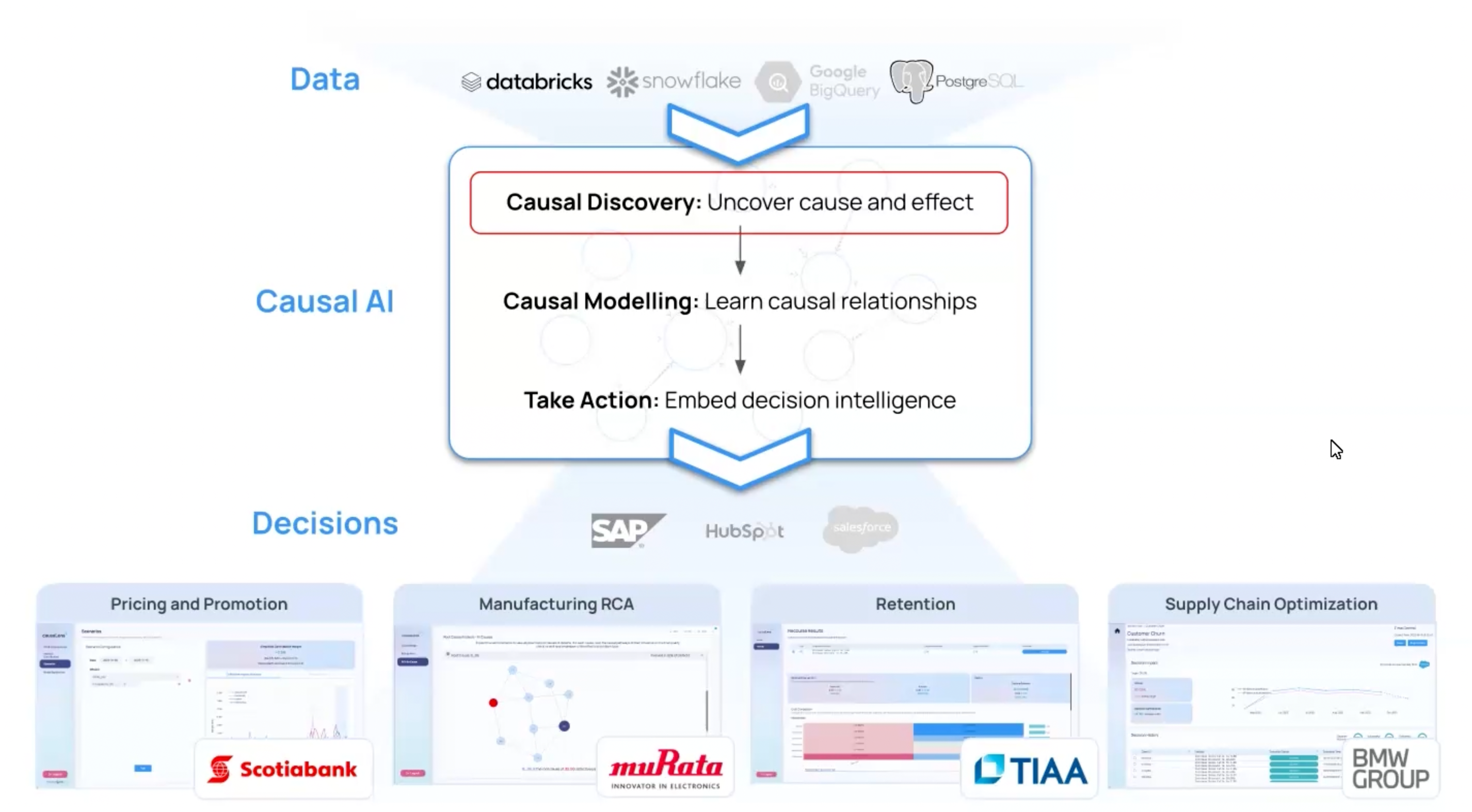
Traditional ML:
- Exploits past correlations in data and assumes systems will behave as they did in the past.
- Focus on predicting outcomes but can’t accurately model interventions or counterfactuals.
- Often struggle to answer “why” in terms of root causes analysis or causal attribution
With Causal AI:
- You can build models that go beyond past correlations, discovering & modeling cause-effect relationships in data.
- You can predict, but more importantly, you can accurately assess the impact of interventions and counterfactuals to drive optimal actions
- You can answer “why”, through root cause analysis and causal attribution.
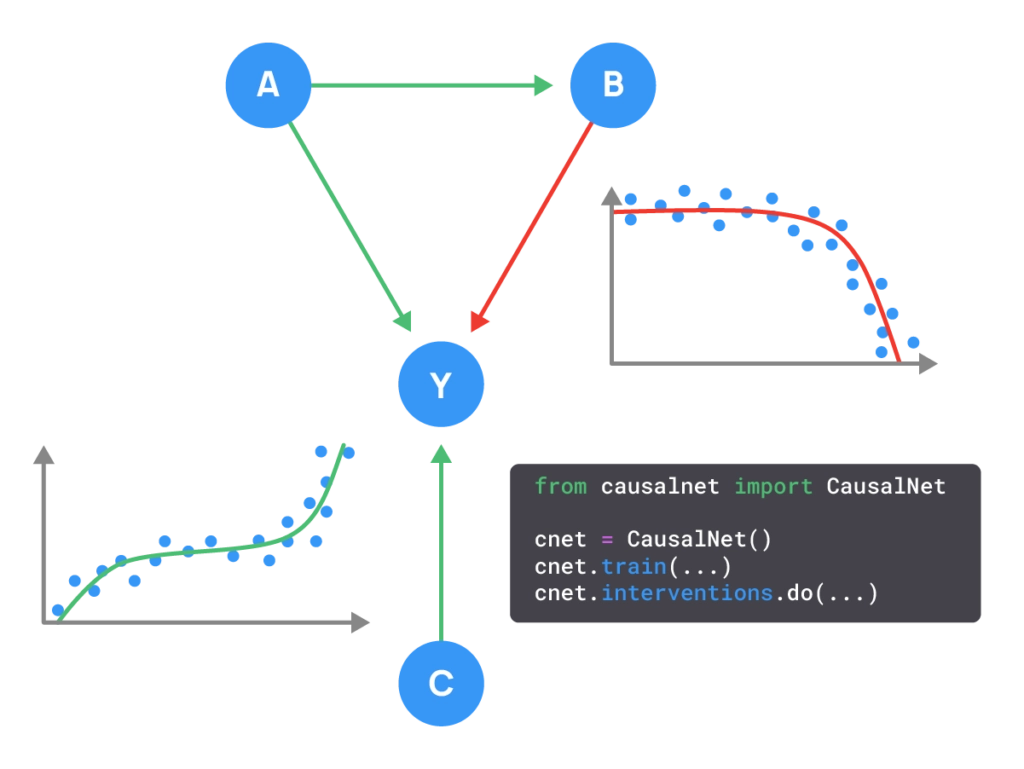
Traditionally, causal inference is used primarily in areas where randomized control trials (RCTs) and A/B tests can infer causal effects. However, recent advancements in the Causal AI field have made it possible to:
- Discover cause-effect relationships from observational data. Read more on the basics of how causal AI discovers cause-effect here.
- Build structural causal models that can robustly predict and accurately estimate interventions and counterfactuals. Read more on CausalNet, our structural causal model, and our causal version of decision trees here.
- Discover optimal interventions that maximize KPIs given business constraints and costs using decision intelligence engines like algorithmic recourse.
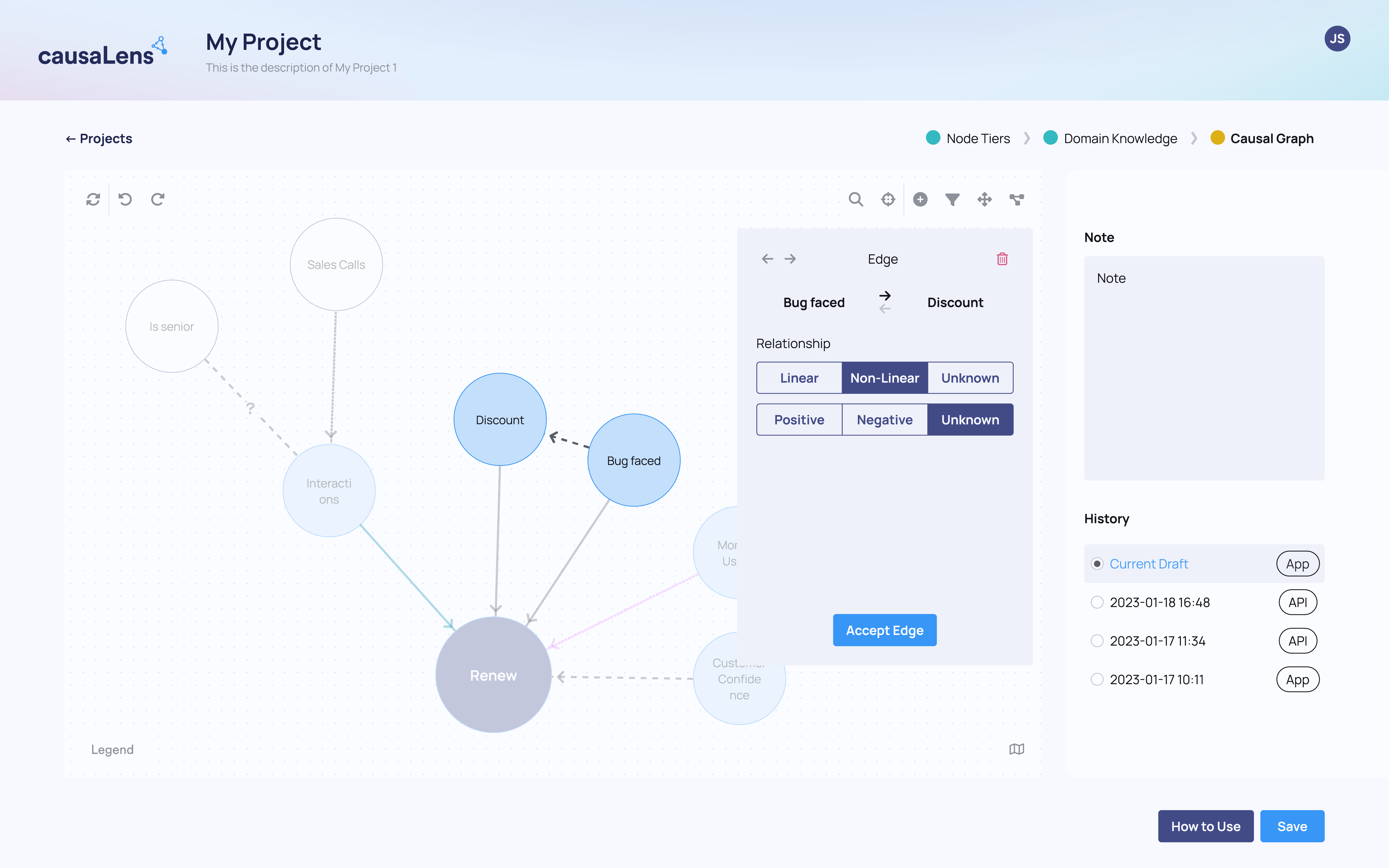
Causal Models unlock the accurate estimation of interventions & counterfactuals, which are crucial for decision making & AI safety.
Counterfactual scenarios can help answer crucial questions like what would happen to sales if the marketing campaign was launched on a different date or if there be a defect if a specific valve did not fail earlier.
We maintain a consistent interface, allowing for the seamless execution of counterfactual & interventional analyses
Read more on Judea Pearl's Ladder of Causality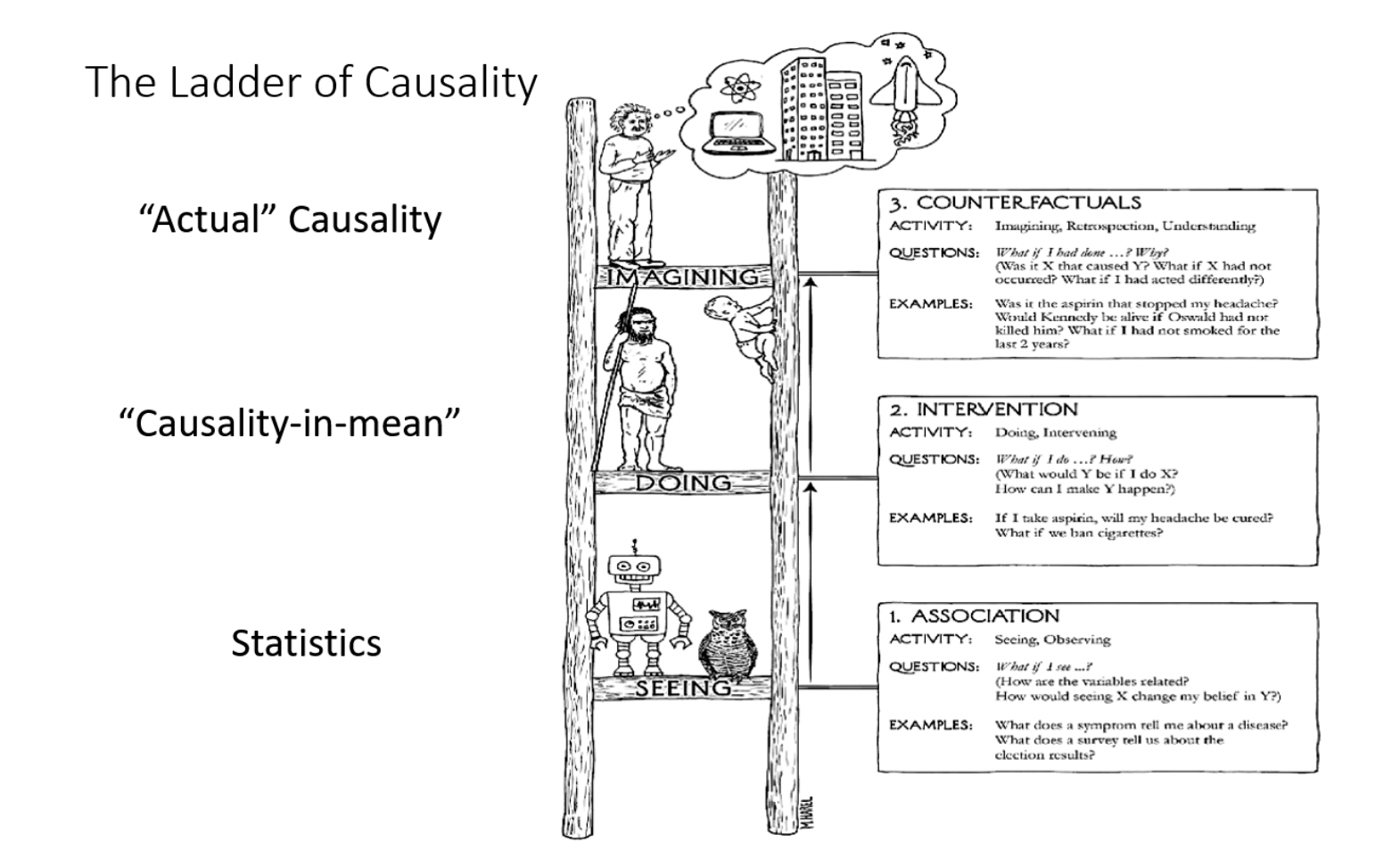
We have solved the hard & tedious engineering problems so that Data Science teams can focus on delivering for their organization.
- An end-to-end solution for going from data to decisions
Our platform simplifies and enhances the highly fragmented Causal AI open-source ecosystem. - Integrate the best of open source with causaLens latest research
Building up and maintaining an internal capability is a time-consuming and costly endeavor that detracts from your core company mission. - Leverage our extensive Causal AI research applied to your key use cases
The causaLens team offers over 50 years of experience applying Causal AI to a range of
Enterprise use cases. - Seamlessly go to production
Share interactive applications in 1 click.
Build decision workflows with pre-built code templates and data connectors. - Extend decisionOS as needed
Our platform can easily be extended due to the large array of defined interfaces and API-first architecture. It is compatible with any Python library or package.

Our platform, decisionOS, can run as a SaaS application, on your cloud or on-premise integrating with the required layers of each cloud.
You can easily create connectors to other systems, such as Salesforce and SAP, or to your data lake, like Snowflake or Databricks, to pull data and push your model’s decisions.
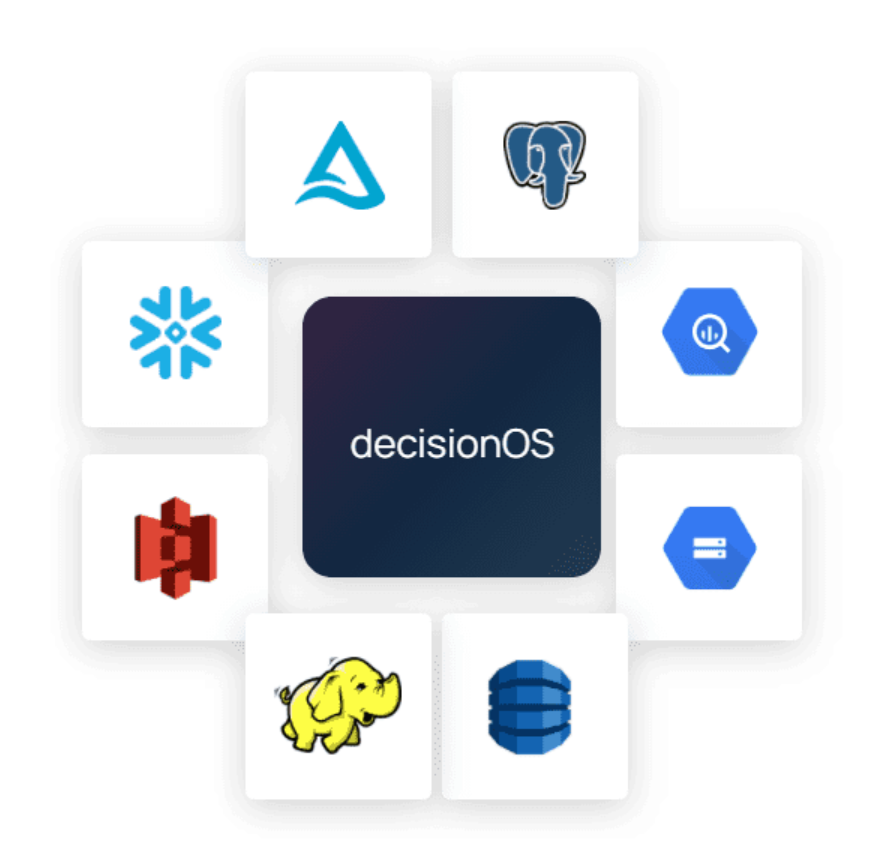
Some examples with end-to-end Causal AI modeling workflows:
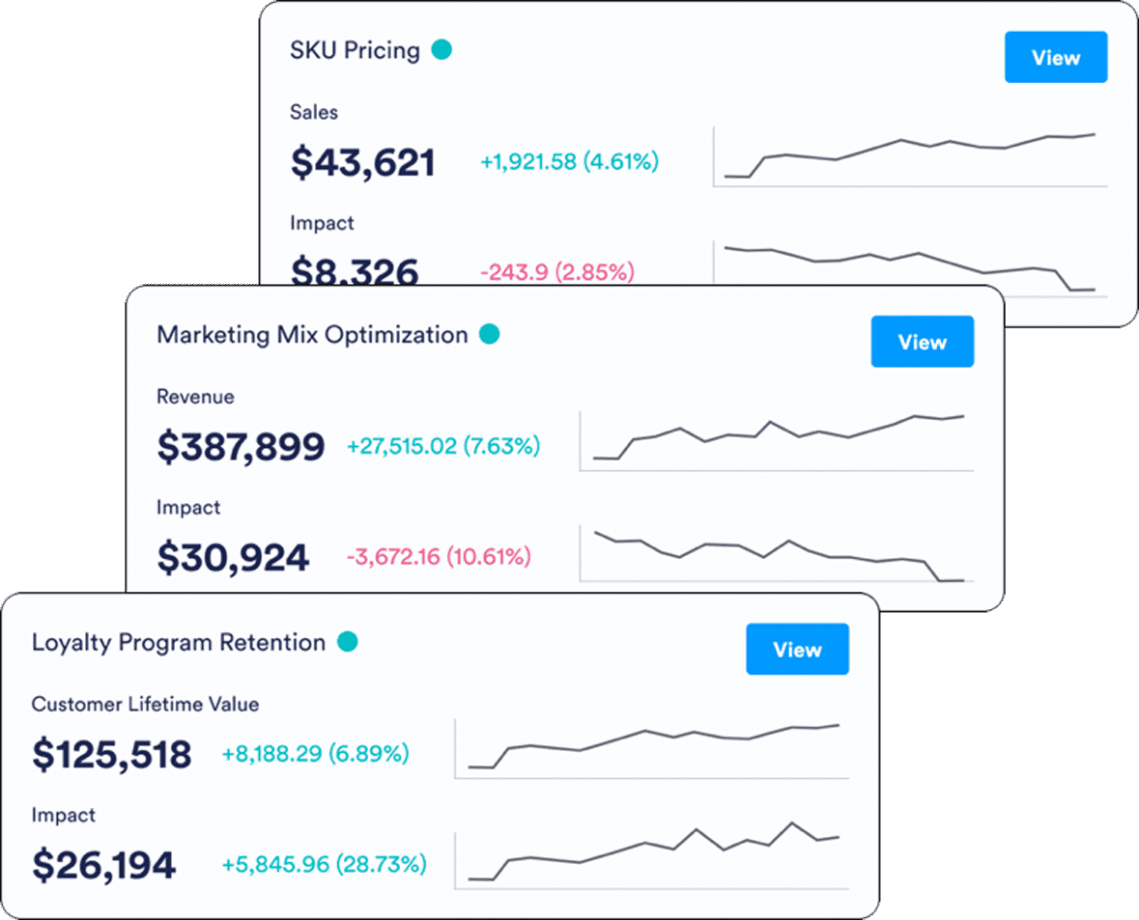
Our platform helps data scientists efficiently address the nuances of working with time-series data across the modeling pipeline including:
- Causal Feature Engineering for discarding spurious correlations within raw, stationarized & transformed features
- Causal Discovery Algorithms that are designed specifically for time-series
- Time Series Causal Graph Viewer & Editor
- Do-Calculus in a time-series setting for accurate estimation of interventions & counterfactuals
- Synthetic controls for attribution of causal effects of an intervention over time
- Root Cause Analysis that takes temporal causation into account
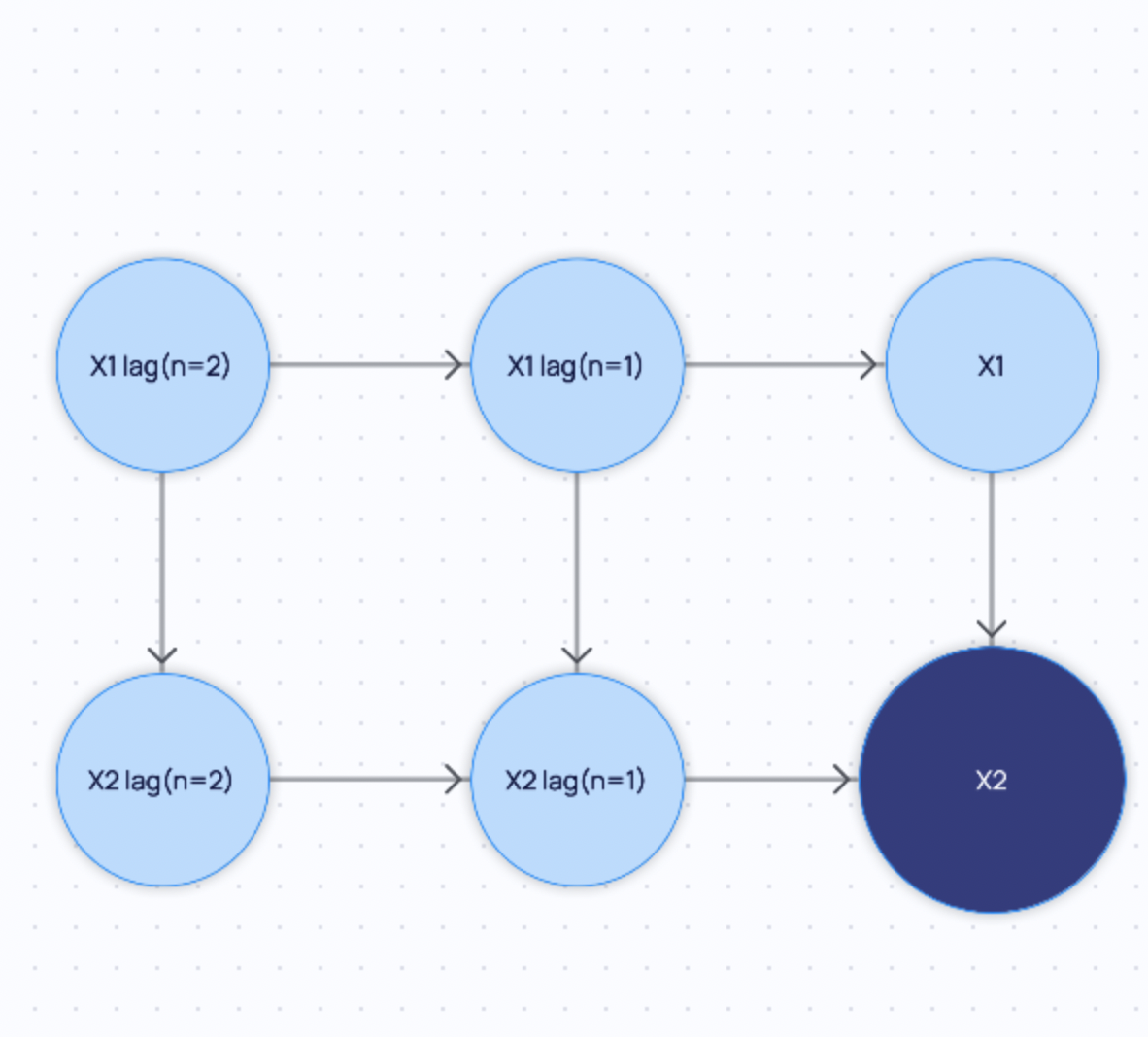
Post hoc explainability methods with proxy models like SHAP and LIME are often insufficient.
They can explain what features are associated with the prediction. The SHAP documentation warns, “Be careful when interpreting predictive models in search of causal insights.”
Causal AI models an ex-ante explainable and can answer how exactly they would respond in unseen or counterfactual scenarios.
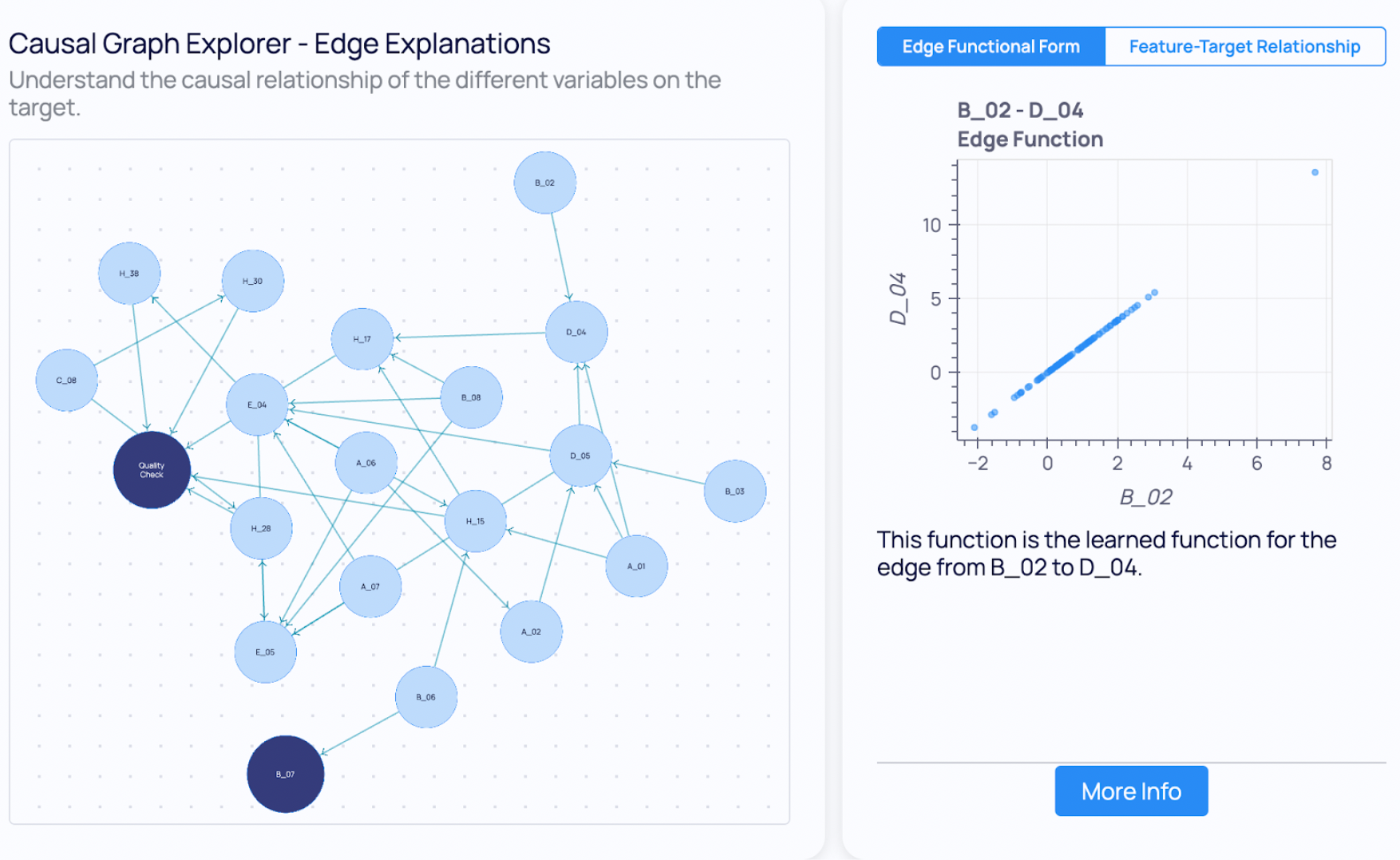
The inherent explainability of our Structural Causal Models mitigates the risks of dealing with data that are not present in the training set.
The web is filled with examples of AI gone wrong when it encounters out-of-distribution data, resulting to bad decisions with financial and/or societal damage.
Structural causal models fit functional relationships between variables, enabling users to calculate exactly how the model would behave in unseen data (obviously this is subject to the functional relationship, however complex, becoming very different in particular circumstances).

Traditional MLOps systems focus on tracking the predictive quality of a model over time. decisionOps empowers data scientists to go beyond that, directly measuring the impact of decision workflows without the need for costly A/B testing and estimating the counterfactual.
See decisionOps in action
Dara is our bespoke framework for building interactive apps.
- Pure python
- Share & productionize your app in 1 click
- Seamlessly build multi-page and more complex applications
- Causal AI-specific components for causal graphs, decision intelligence engines and more.
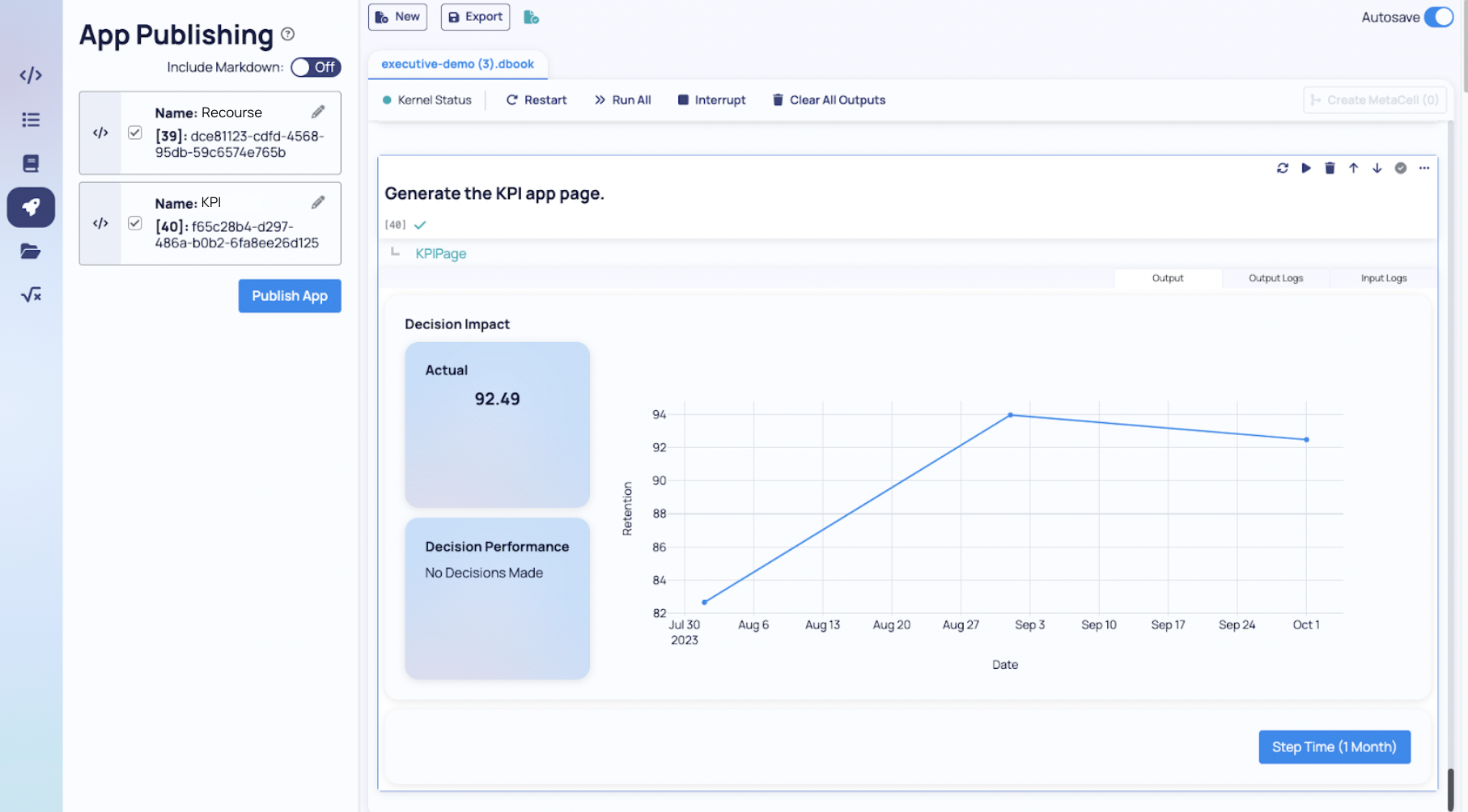
Generative AI has had a massive impact on the machine-learning world. But their understanding of causality is limited and their hallunications don’t deem them trustworthy for certain use cases.
Our platform allows you to integrate your LLMs with your causal models to exploit the best of both worlds. Build better causal graphs, embed causal thinking into LLMs, or use language as a way for business users to interact with your models.
The synergies between CausalAI + GenAI